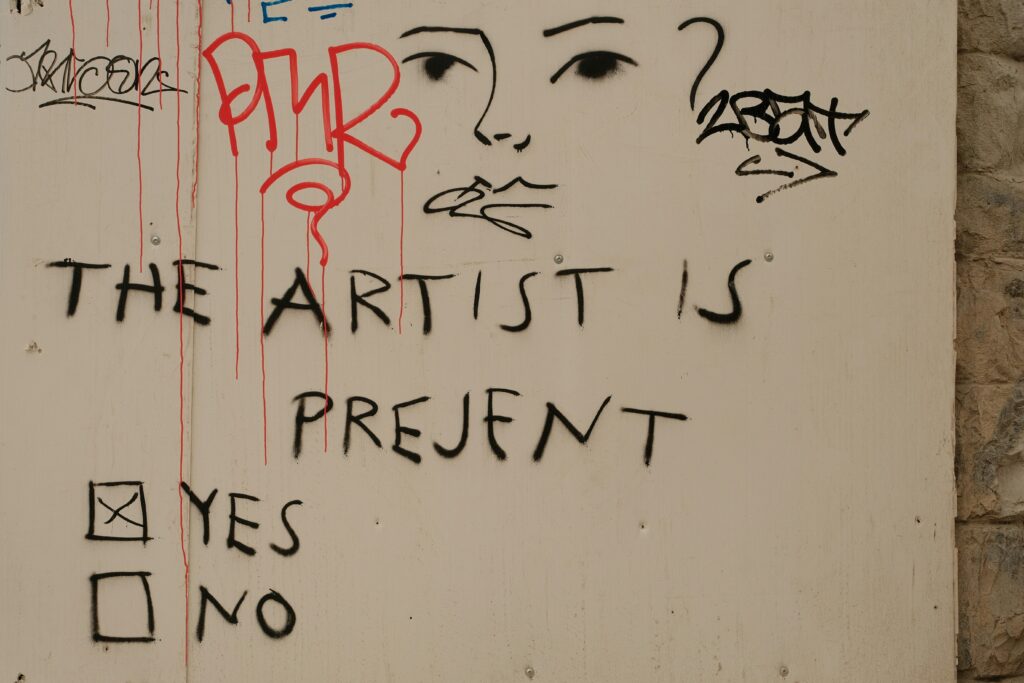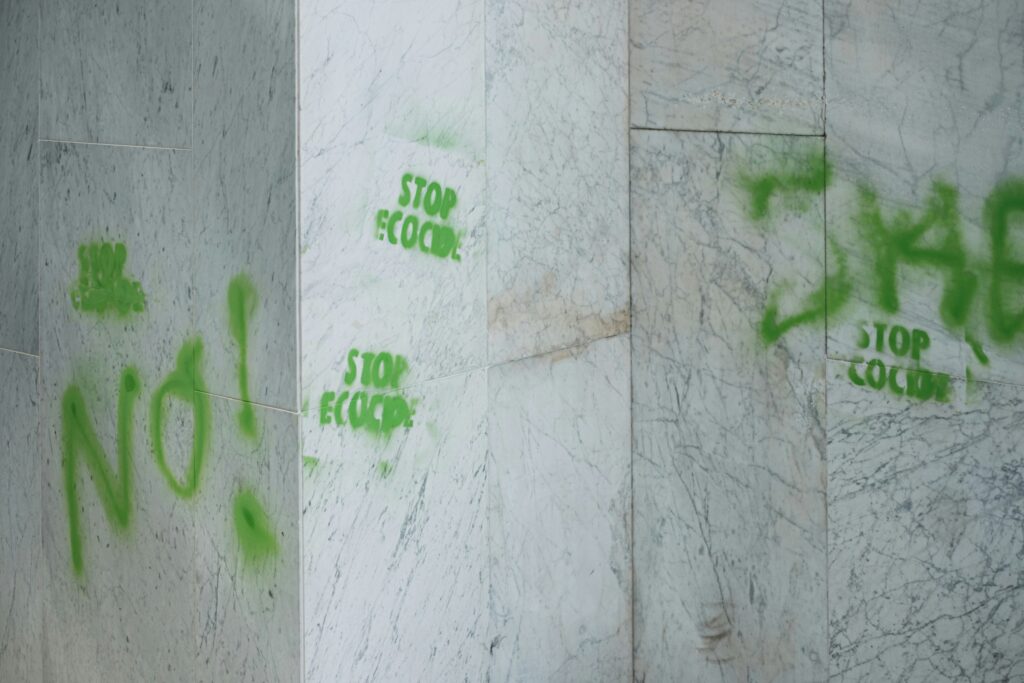Pop Art’s Legacy in the 1980s: Iconic Voices and Global Impact
The bold colors and graphic energy of Pop Art didn’t fade with the 1960s. Instead, the 1980s saw a vibrant evolution of the style, with iconic artists shaping its direction and pushing its boundaries across new platforms and international art scenes.
Roy Lichtenstein and the Comic-Strip Aesthetic
Roy Lichtenstein’s signature style, drawn directly from comic books and commercial printing, stood out with its use of Ben-Day dots, visual irony, and clean lines.
- Lichtenstein redefined fine art by embracing mass-produced imagery
- His work blurred the line between “high” and “low” culture
- By the 1980s, his influence reinforced Pop Art’s relevance in postmodern dialogues
His pieces continued to resonate because they tackled themes of consumerism, romance, and mass media with a uniquely detached yet visually striking perspective.
Keith Haring: From Subway Walls to Art Galleries
Keith Haring emerged from the streets of New York with a visual language rooted in accessibility and activism.
- Originally known for chalk drawings in subway stations
- His motifs—radiant babies, barking dogs, bold human figures—were instantly recognizable
- Haring’s work carried strong social messages about AIDS awareness, LGBTQ+ rights, and anti-apartheid politics
Unlike many contemporaries, Haring rejected elitism in art and focused on outreach, community engagement, and collaboration. By moving seamlessly from street culture to the global art stage, he embodied Pop Art’s spirit of energy and inclusiveness.
The Global Pop Surge of the 1980s
Pop Art in the 1980s transcended borders. It became part of a global visual language that resonated from Tokyo to Berlin.
- Artists drew on advertising, television, and celebrity culture for inspiration
- The style merged with punk, hip-hop, skate culture, and graphic design
- Art fairs, biennials, and media exposure helped spark international interest in Pop aesthetics
This worldwide embrace of Pop Art reflected a growing awareness of mass media’s power and a desire to critique—and celebrate—it. The movement’s energy proved adaptable and endlessly relevant in a rapidly changing world.
In the years after World War II, the world saw a boom in consumerism. Supermarkets, advertising, mass media—everything got louder, brighter, and more accessible. Art didn’t stay in its ivory tower either. Pop Art was born in this climate, blending fine art with the imagery people saw every day on cereal boxes, in magazines, and on billboards.
Before Pop Art, high culture and fine art stayed mostly in galleries, guarded by critics and academic elites. Pop artists like Andy Warhol and Roy Lichtenstein flipped the script. They didn’t just ignore the so-called art rules—they mocked them. Soup cans, comic strips, and celebrity faces became worthy subjects. The brushstrokes didn’t matter as much as the concept. Art was now allowed to be mass-produced, ironic, and accessible.
This wasn’t just a new style—it was protest through paint. Pop Art challenged the idea that only certain subjects, techniques, or artists belonged in museums. It told the art world: culture isn’t only what a few say it is. It’s what people live, buy, and share every day.
How Media Saturation and Tech Are Reshaping Pop Art
Pop Art used to be about supermarket icons and glossy celebrity culture. Now, it reflects a world that’s flooded with digital noise. With media saturation at an all-time high, artists aren’t just reacting to the bombardment—they’re dissecting it. The chaos of scrolling feeds, algorithmic trends, and content overload has become both backdrop and battleground.
Modern Pop artists are also digging deeper. It’s not just soup cans anymore but identity, personal history, and politics woven into bright, shareable aesthetics. Artists are using Pop’s visual hooks to talk about race, gender, mental health, and power. Identity isn’t separate from the work; it’s baked in.
And then there’s tech. AI-generated portraits, glitch aesthetics, interactive AR canvases—technology is as much a tool as it is a theme. Artists are turning cameras and code into brushes, sometimes even collaborating with machines. In this version of Pop Art, the screen isn’t just a medium, it’s the message.
What we’re seeing now is a Pop Art that’s messier, sharper, and more self-aware than ever. It has to be. The world won’t stop scrolling.
Andy Warhol’s Campbell’s Soup cans and Marilyn Monroe prints didn’t just disrupt the art world—they redefined it. By turning everyday consumer goods and a Hollywood icon into high art, Warhol blurred the line between gallery walls and grocery store shelves. He didn’t just paint a soup can; he made it a symbol of mass culture, challenging the very definition of what art could be.
His use of silkscreen printing wasn’t about convenience. It was deliberate—a mechanized process echoing the mass production of products and fame alike. Repetition, in Warhol’s hands, became a visual mantra. One Marilyn wasn’t enough. Dozens, lined up and color-shifted, reminded viewers that celebrity was a marketed product as much as Campbell’s soup.
Warhol didn’t hide his fascination with fame or commerce. He embraced it, played with it, and pushed it into art history. This was Pop at its sharpest—clean, iconic, and uncomfortably honest about our obsession with image and consumption.
Street Art Goes Viral and Political
Satire Meets Activism
Modern street artists are redefining the role of public art. Artists like Banksy are not just making visual statements but engaging in sharp political satire. Their work challenges authority, questions societal norms, and often sparks debate beyond the walls it’s painted on.
- Street art becomes protest, commentary, and installation piece all at once
- Satirical elements expose power dynamics, environmental concerns, and social issues
- Banksy exemplifies how a single image can create worldwide dialogue
Instagram and Instant Fame
Social media has redefined how street art circulates. What used to be location-bound is now instantly viewable across the globe, often triggering virality within hours.
- Platforms like Instagram amplify exposure far beyond the street
- Artists gain followings without galleries or institutions
- Visibility grows exponentially with the help of influencers and reposts
Vivid Color Meets Viral Commentary
Street art in the digital age uses bold visuals not just to grab attention but to stand out on a screen. From neon color schemes to stylized lettering, this aesthetic evolution aligns perfectly with how people engage online.
- Bright palettes ensure visibility in crowded digital feeds
- Imagery is designed to provoke emotional or political reactions
- Pop-influenced styles increase shareability and meme potential
Pop Art’s Ongoing Dialogue with Everyday Culture
Art That Speaks the Language of the Moment
Pop Art has always blurred the lines between high art and popular culture. What began as a bold commentary on consumerism and mass media remains just as relevant today. Its enduring power lies in its ability to reflect the everyday – from supermarket shelves to screen time.
- Draws inspiration from advertising, celebrity culture, and product packaging
- Reflects the visual language of modern consumer life
- Responds quickly to cultural shifts in society
From Warhol to the Blockchain
The movement that gave us Warhol’s Campbell’s soup cans and Marilyn Monroe portraits has evolved with technology. Where screen printing once reigned, today’s Pop Art pioneers are using digital tools and platforms to push the genre forward.
- Warhol’s screen prints redefined artistic reproduction
- Modern artists use digital media, augmented reality, and NFTs
- Platforms like Instagram and blockchain marketplaces act as new-age galleries
A Living, Breathing Art Form
Pop Art doesn’t belong to the past. Instead, it adapts, reacts, and stays in step with what’s relevant now. Whether it’s through memes, viral aesthetics, or virtual collectibles, it continues to evolve alongside the culture it reflects.
Key Takeaway: Pop Art lives on because it never stops communicating with the world around it. Its relevance isn’t static. It grows, responds, and reinvents, always finding new ways to capture the spirit of the times.
The Emotional Depth Behind Bold Visuals
Visual storytelling in vlogging has taken a sharp turn in 2024. It’s louder, more experimental, but also more emotionally anchored than ever. There’s a reason for that. Audiences are exhausted by polish without purpose. The most striking vlog content today doesn’t just look cool — it hits somewhere deeper. A shaky handheld sequence says vulnerability. Unfiltered lighting exposes the soul, not just skin texture.
More creators are blending styles that traditionally would clash. We’re seeing raw, diary-style confessionals woven into high-consumption aesthetics like mall hauls or brand showcases. That tension — rawness against the backdrop of consumer gloss — is what’s pulling people in. It’s not just what you’re showing, it’s why you’re showing it. And viewers can tell the difference.
This cross-pollination is creating something more honest. Even the most brand-aligned content now carries an undertone of angst or reckoning. The slick edits are still there, but they’re paired with voice cracks, pauses, or footage that lingers past comfort. For artists looking to explore this space, there’s a solid breakdown in Neo-Expressionism: Reinterpreting Emotion Through Paint.




